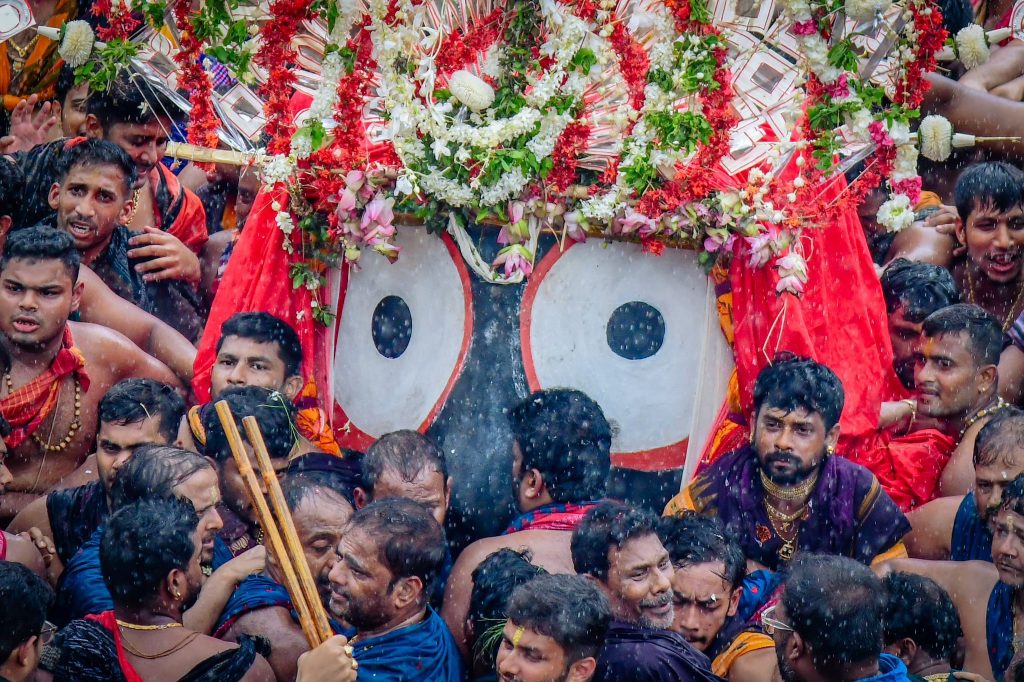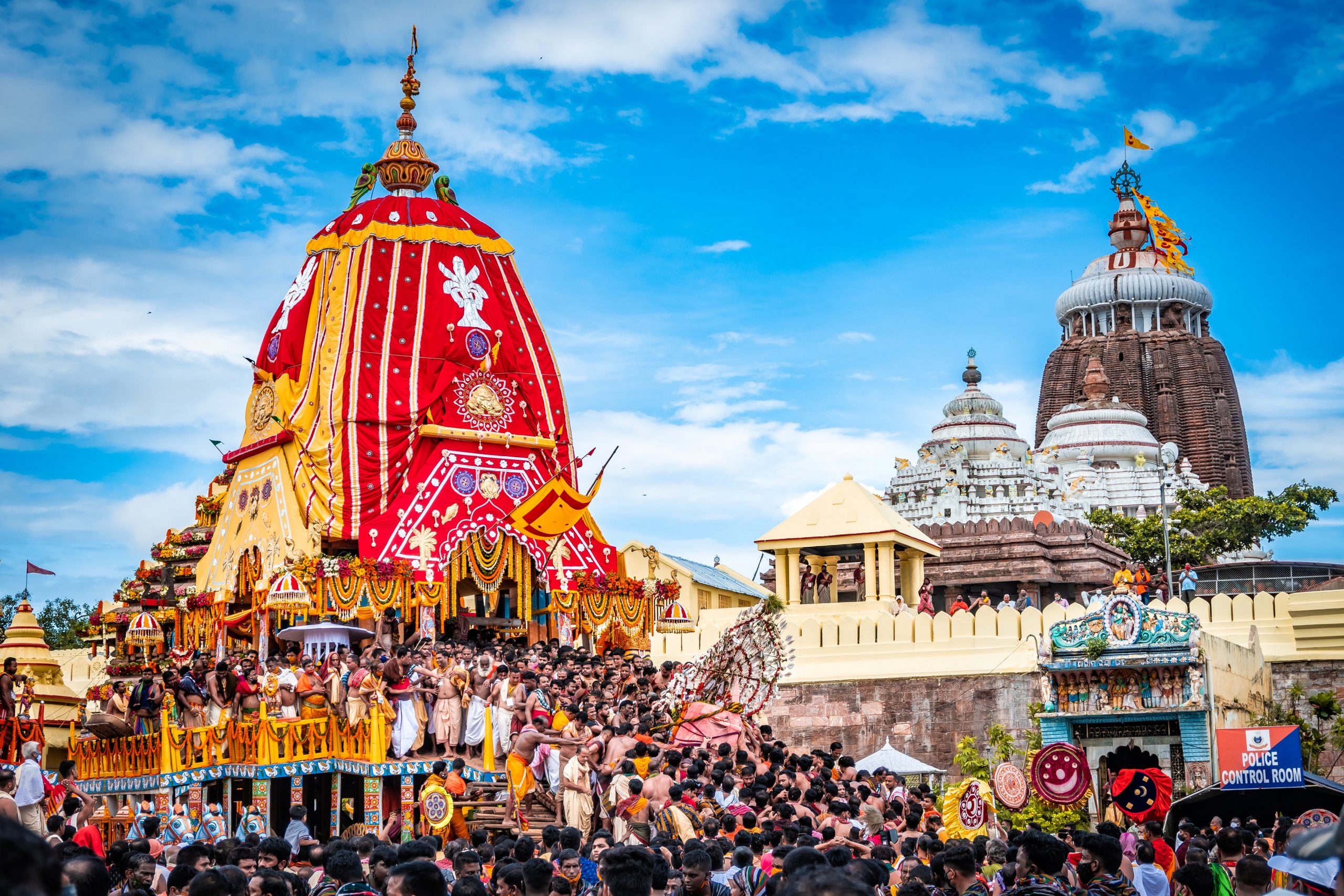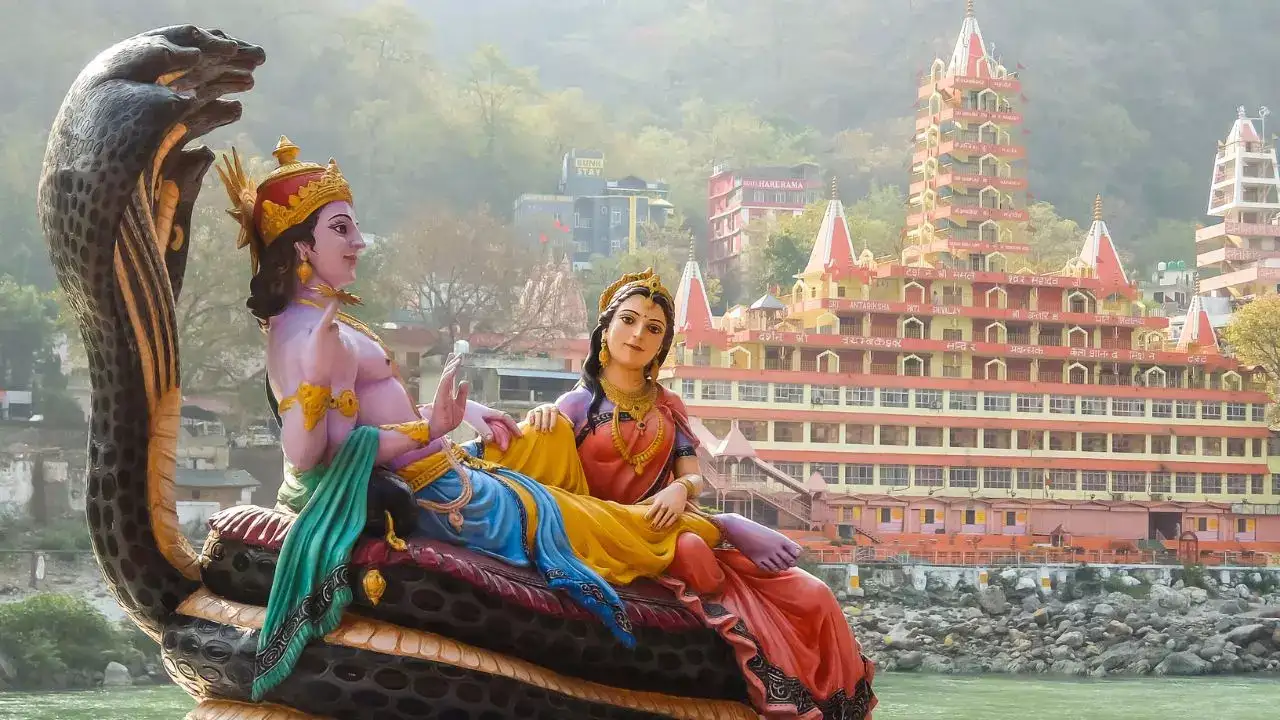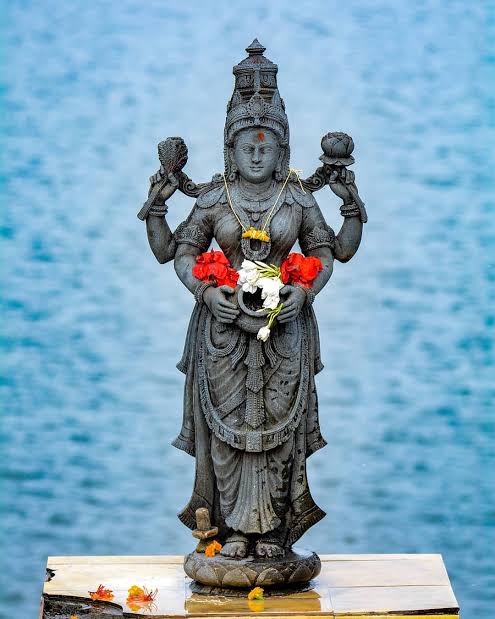Jagannath Ratha Yatra – The Divine Chariot Festival of Puri
Jagannath Ratha Yatra is the world-famous Chariot Festival held annually in Puri, Odisha, where Lord Jagannath, Balabhadra, and Subhadra travel from their sanctum to visit Gundicha Temple, offering divine darshan to all.
Jagannath Ratha Yatra takes place on the Dwitiya Tithi of Shukla Paksha in the month of Ashadha (June-July). This festival sees the deities move from the Jagannath Temple to Gundicha Temple, symbolizing a divine vacation to their aunt’s home. The return journey, known as Bahuda Yatra, occurs after nine days.
It attracts over a million devotees who come to pull the grand rathas (chariots), believing this act grants them moksha. The chariot procession is one of the rare occasions when Lord Jagannath is accessible to everyone, regardless of caste, creed, or religion.
The streets of Puri, lined with bhajans, drumbeats, and flower-strewn paths, transform into an ocean of devotion. Known also as Gundicha Yatra or Ghosha Yatra, it honors Queen Gundicha who initiated the tradition. Symbolically, the journey reflects the soul’s progress toward liberation.
Deities Associated
Lord Jagannath
A form of Lord Krishna, Jagannath is considered the Supreme Purusha. His round, large-eyed idol symbolizes boundless love and infinite compassion. He leads the chariot procession.
Lord Balabhadra
The elder brother of Jagannath, Balabhadra (Balarama) symbolizes strength, truth, and righteousness. He rides the Taladhwaja chariot, leading the way.
Devi Subhadra
The sister of Jagannath and Balabhadra, Subhadra represents feminine energy and divine wisdom. She rides the Darpadalana chariot, protected between her two brothers.
Jagannath represents the cosmic soul and universal love. Balabhadra reflects moral strength, determination, and righteousness. Subhadra signifies inner wisdom, spiritual knowledge, and feminine grace.

“When Jagannath leaves His temple, He carries the entire universe in His chariot of grace.”
Origin, Significance & Vedic Astrological Relevance
Origin
Jagannath Ratha Yatra is deeply rooted in ancient texts like Skanda Purana, Padma Purana, and Brahma Purana. According to legends, it signifies Lord Krishna’s journey to Vrindavan with Balabhadra and Subhadra to meet Radha and the gopis.
As they reached the gates of Vrindavan, the conversation between Krishna and Balarama was so intense that Subhadra stood between them, witnessing their emotions. This moment became the divine triad representation seen in the sanctum.
Another account speaks of King Indradyumna of Malwa who dreamt of Lord Vishnu appearing as a wooden log on the seashore. The divine carpenter, Vishwakarma, agreed to carve the idols in secrecy and vanished when disturbed prematurely.
The incomplete forms were accepted as divine manifestations. These idols of Jagannath, Balabhadra, and Subhadra represent the Lord’s transcendental form beyond human comprehension.
Ratha Yatra also recalls the compassion of Queen Gundicha, a great devotee, who desired the Lord to visit her home. Thus, the deities travel annually from Jagannath Temple to Gundicha Temple in her honor.
The Katha Upanishad offers a symbolic meaning: the chariot is the body, the deity is the soul, and the journey signifies the Atman’s movement toward liberation, guided by dharma and devotion.
Philosophical Symbolism
The Katha Upanishad explains that the chariot represents the body, the deity is the soul, the intellect is the charioteer, and the mind the reins. The Ratha Yatra becomes the Atman’s journey towards self-realization.
Astrologically, it begins during Dakshinayana, the sun’s southern transit. It is a time of spiritual reflection and inner cleansing.
Customs, Traditions & Rituals
Chariot Construction
The three chariots are made of neem, phassi, dhausa, and other sacred woods. Built afresh every year by hereditary carpenters called Maharana Sevakas, each chariot has unique names, structures, and symbols.
| Deity | Chariot Name | Wheels | Height | Canopy Colors |
|---|---|---|---|---|
| Jagannath | Nandighosha | 16 | 44’2″ | Red & Yellow |
| Balabhadra | Taladhwaja | 14 | 43’3″ | Red & Green |
| Subhadra | Darpadalana | 12 | 42’3″ | Red & Black |
Pre-Yatra Ceremonies
Chandan Yatra: Begins 42 days before Ratha Yatra, where deities enjoy sandalwood rituals and boat rides on the Narendra pond.
Snana Yatra: On Jyestha Purnima, the idols are bathed with 108 pots of water, after which they fall ‘ill’ and are secluded.
Anasara: The 15-day period where the deities rest. Devotees worship painted replicas known as Anasara Pati.
Netrotsava: A day before Ratha Yatra, new eyes are painted on the idols in a ritual called Navayauvana Darshan.
Morning Temple Rituals on Ratha Yatra Day
The day begins with Mangal Arati in the sanctum of the temple. Rituals like Avakasha (cleansing), Rosa Homa (kitchen fire offering), and Surya Puja (Sun worship) follow.
Dwarapala Puja is offered to the gatekeepers of the Lord. Then Sakala Dhupa, the morning bhog offering, is presented, followed by Mangal Arpana, Pushpanjali, and Tulsi mala offering.
The final ritual is Mailam Lagi, which involves unfastening the deities’ ornaments and preparing them for the grand procession called Pahandi.
Pahandi Bije
Pahandi refers to the slow, imbalanced gait-like movement of the deities during the procession. It begins at the sanctum and concludes at the chariots stationed outside the temple.
First comes Lord Sudarshana, followed by Balabhadra, then Subhadra, and finally Jagannath. At the Sata Pahacha (seven steps), the deities receive massive floral crowns called Tahias.
Subhadra and Sudarshana are lighter and carried on shoulders. Jagannath and Balabhadra are heavy, so wooden poles are affixed to their backs in a ritual known as Senapata Lagi.
Silk ropes are tied around their heads and waists, and they are rhythmically pulled, pushed, and guided to their chariots. All this happens amid cymbals, mridangas, and chanting.
Types of Pahandi
Pahandi is observed in two ways: Dhadi Pahandi and Goti Pahandi. Dhadi (line) Pahandi is a group movement where all deities move in succession. This is used during outward journeys.
Goti (single) Pahandi is an individual movement, where each deity moves one at a time. It is performed during inward movements, such as Niladri Bije.
These Pahandi rituals occur six times a year, across Snana Yatra, Ratha Yatra, Bahuda Yatra, and Niladri Bije. Each moment carries devotional and cosmic symbolism.
Tahia Lagi and Its Legend
Tahia are exquisite floral crowns adorning the deities during their procession. Jagannath and Balabhadra wear Mayura Chandrika-style crowns, Subhadra wears a Pania, and Sudarshana a Chula.
Crafted from lotus petals, banana stem, bamboo, thermocol, and basil leaves, Tahias are never reused. The Raghava Das Matha prepares 24 crowns annually.
Legend tells of Raghu Arakhita Das, a saintly devotee who was shielded from the sun by Lord Jagannath disguised as a milkman. In gratitude, the devotee asked to make Tahias, a wish granted eternally.
Before the procession, Tahias are gifted from the Mahalaxmi Temple to Lord Jagannath, symbolizing the goddess’s blessings for the journey.
Chariot Procession
Once seated on their chariots, the deities receive a ceremonial sweeping by the Gajapati King known as Chhera Pahanra. He sweeps with a golden broom, showing humility before the divine.
Devotees then pull the chariots with long ropes, believing that even touching the rope absolves sins. The 3 km road to Gundicha Temple becomes a path of liberation. This entire route, known as Bada Danda, transforms into a sea of devotees.
The procession passes through Ananda Bazaar, Lion’s Gate, and Aruna Stambha. The chariots pause at Mausi Maa Temple, where Poda Pitha (a baked delicacy) is offered to the deities.
Stay at Gundicha and Return
The deities rest for 7 days at the Gundicha Temple. It is said that Queen Gundicha personally cleansed the temple every year for their arrival.
On the fifth day, Lakshmi Devi visits the temple to summon Jagannath in a ritual called Hera Panchami. She is angered but ultimately blessed by the Lord.
On the ninth day, the deities return in the Bahuda Yatra. This is followed by Suna Besha, where the deities are adorned with over 200 kg of gold ornaments.
Finally, during Niladri Bije, the deities re-enter the sanctum. Lakshmi initially denies Jagannath’s entry. He appeases her with Rasgulla, a sweet that now symbolizes marital harmony.
This moment marks the end of the Ratha Yatra, concluding the divine journey with joy, reunion, and spiritual fulfillment.
Spiritual & Social Benefits
- Grants moksha and destroys sins
- Deepens humility, love, and universal brotherhood
- Opens divine doors for all, regardless of caste or creed
- Unites communities in service and devotion
- Fulfills wishes and brings divine protection




